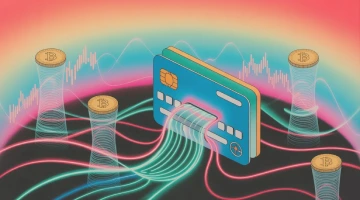10 Reasons Why Your Coin Needs a Cross-Chain Bridge

In the world of blockchain and cryptocurrencies, the term cross-chain solutions has gained immense significance in recent years. It has opened the doors to an era of interoperability, allowing different blockchain networks to communicate and share assets. One of the key components of these solutions is the cross-chain bridge development. In this comprehensive guide, we will explore the evolution and importance of cross-chain solutions, delve into the development of cross-chain bridges, and understand how they enable seamless asset transfer between blockchain networks.
Evolution of Cross-Chain Solutions
Cross-chain solutions were born out of the need to overcome the inherent isolation of blockchain networks. Each blockchain operates independently, with its own set of rules, consensus mechanisms, and native assets. This isolation limited the fluidity of assets and data between different networks, which hindered the growth and utility of blockchain technology.
As the blockchain ecosystem expanded, blockchain developers and enthusiasts recognized the need for cross-chain solutions to address these limitations. Cross-chain solutions aim to enable interoperability between disparate blockchain networks, allowing assets and data to move seamlessly from one chain to another.
Why Cross-Chain Solutions Were Created
Cross-chain solutions were created to address several critical challenges in the blockchain space:
- Isolation: Isolated blockchains limit the transfer of assets and data between different ecosystems. Cross-chain solutions break down these barriers, enabling interaction between diverse blockchain networks.
- Asset Portability: Without cross-chain solutions, transferring assets between different blockchains often involves centralized exchanges or intermediaries. Cross-chain bridges eliminate this reliance, providing users with the ability to move assets in a decentralized and trustless manner.
- Liquidity Enhancement: By making assets available on multiple blockchains, cross-chain solutions increase the potential for trading and utilization. This enhanced liquidity benefits both users and the blockchain ecosystems.
- Enhanced Functionality: Users can access a wider range of features and services offered by distinct blockchains without switching between wallets or ecosystems. Cross-chain solutions empower users with more choice and flexibility.
- Decentralization: Cross-chain solutions typically operate in a decentralized and trustless manner. This reduces the need for intermediaries, enhancing security and transparency.
Cross-Chain Bridge Development
Cross-chain bridge development is the cornerstone of cross-chain solutions. These bridges are the mechanisms that facilitate the secure transfer of assets from one blockchain to another. Let's explore how they work:

1. Locking Assets: Users initiate the process by "locking" their digital assets on one blockchain. This involves sending the assets to a specific smart contract or address on the source blockchain. Locking effectively takes these assets out of circulation on the source blockchain.
2. Verification: The cross-chain bridge then verifies the transaction on the source blockchain to ensure that the assets have been successfully locked.
3. Issuing Wrapped Tokens: Once the assets are verified, corresponding "wrapped" or "pegged" tokens are issued on the destination blockchain. These tokens represent the locked assets and can be used within the ecosystem of the destination blockchain.
4. Utilization on the Destination Blockchain: Users can now use these wrapped tokens on the destination blockchain, making it possible to interact with different decentralized applications (DApps), trade on different decentralized exchanges (DEXs), or use the assets in various ways within the destination blockchain's ecosystem.
5. Redeeming: At any time, users can choose to "redeem" their wrapped tokens for the original assets on the source blockchain. This process reverses the bridge, unlocking the assets on the source blockchain and burning the wrapped tokens on the destination blockchain.
Security and Trust in Cross-Chain Bridge Development
Security is paramount in cross-chain bridge development. Any vulnerabilities or centralization within the bridge can pose risks to the assets being transferred. Cross-chain bridge developers must implement robust security measures to safeguard user assets and maintain trust in the system.
Benefits of Cross-Chain Bridge Development
Cross-chain bridge development offers several significant benefits:

- Enhanced Security: Secure and trustless cross-chain bridges provide a safe environment for asset transfers, reducing the risk of hacks or fraud.
- Asset Diversification: Users can diversify their asset holdings by easily moving assets between different blockchains, reducing risk and increasing investment opportunities.
- Global Access: Cross-chain bridges make it easier for people worldwide to access a wide range of assets and services, fostering blockchain adoption.
- Increased Liquidity: The bridges enhance liquidity for assets, making it easier for traders and investors to access and trade various assets.
Cross-chain solutions, powered by cross-chain bridge development, have revolutionized the blockchain ecosystem by fostering interoperability and asset portability. These innovations not only break down barriers between blockchain networks but also unlock a world of possibilities for users and developers. As the blockchain space continues to evolve, cross-chain solutions will play an increasingly crucial role in shaping the future of DeFi and blockchain technology as a whole. Stay tuned for more exciting developments in this ever-expanding field.
10 Reasons Why Your Coin Needs a Cross-Chain Bridge
Let’s explore why cross-chain bridge development is crucial for blockchain projects. These bridges unlock a world of possibilities, promoting market expansion, token liquidity, and user empowerment.

The Significance of Cross-Chain Bridge Development
1. Interoperability Unleashed
Cross-chain bridge development is essential for blockchain projects seeking to overcome the inherent isolation of blockchain networks. Each blockchain operates within its own ecosystem, with its set of rules and native assets. Cross-chain bridges enable these networks to communicate, fostering interoperability and expanding the project's reach.
2. Enhanced Liquidity
Cross-chain bridges play a pivotal role in boosting token liquidity. By facilitating token trading on multiple blockchains and DEXs, projects can create a vibrant market for their tokens. This heightened liquidity attracts traders and investors, further enhancing the project's ecosystem.
3. Market Expansion
Blockchain projects can tap into various blockchain communities and ecosystems through cross-chain bridges. This market expansion opens doors to a diverse user base, attracting users, developers, and investors from different networks. The project gains visibility and grows in significance.
4. Diversification of Assets
For projects with tokens offering intrinsic value or utility, cross-chain bridges enable users to diversify their asset portfolio. Users can move tokens to blockchains with specific functionalities, providing flexibility and options for managing their digital assets.
5. Cross-Platform Utility
Tokens can serve different purposes on various blockchains. Cross-chain bridges empower users to utilize tokens where they're most beneficial. This versatility increases the token's utility and appeals to a broader audience.
6. DeFi Opportunities
DeFi applications predominantly operate on specific blockchains. Projects with cross-chain bridges can tap into the DeFi ecosystem, offering users access to decentralized lending, borrowing, staking, and yield farming opportunities.
8. Strategic Partnerships
Cross-chain bridges facilitate strategic partnerships and collaborations. These partnerships can involve co-development, joint marketing, or shared liquidity pools, creating synergies and mutual benefits.
9. User Empowerment
Cross-chain bridges development empowers users to control their assets. Users have the freedom to choose where to hold, trade, or use their tokens, eliminating restrictions imposed by a single blockchain.
10. Ecosystem Growth
A thriving cross-chain ecosystem attracts developers who build web3 applications and services around defi tokens. This growth contributes to the expansion and adoption of the project's ecosystem.
Cross-chain bridge development is paramount for blockchain projects aiming to achieve interoperability, token liquidity, and market expansion. These bridges break down barriers, unlocking a world of opportunities for users and developers. As the blockchain space continues to evolve, cross-chain solutions, powered by cross-chain bridges, are poised to shape the future of DeFi and blockchain technology as a whole. Stay tuned for more exciting developments in this ever-expanding field.
Types of Cross-Chain Solutions
Let’s dive into the cross-chain solutions overview, covering how they drive interoperability, liquidity, and market expansion within the blockchain ecosystem.

- Cross-Chain Bridges
Cross-chain bridges are the most prevalent and versatile form of cross-chain solution. They enable assets or data to flow seamlessly between different blockchains, fostering interoperability. Notable examples include Wrapped Bitcoin (WBTC) and Wrapped Ether (WETH).
- Interoperability Protocols
Interoperability protocols introduce standard methods for enabling communication and data exchange between blockchains. These protocols often utilize unique consensus mechanisms, connectors, or relay chains to facilitate interoperability. Projects like Polkadot and Cosmos exemplify this approach.
- Atomic Swaps
Atomic swaps empower users to exchange cryptocurrencies or tokens across different blockchains directly and peer-to-peer. Smart contracts ensure secure and simultaneous execution without the need for intermediaries. Atomic swaps are commonly used for trading one cryptocurrency for another between users on distinct blockchains.
- Sidechains
Sidechains serve as parallel blockchains that interoperate with the main blockchain. They enable assets to move from the primary chain to the sidechain, where they can be utilized for specific applications or purposes. RSK (Rootstock) is an example of a sidechain for the Bitcoin network.
- Wrapped Tokens
Wrapped tokens are issued on one blockchain to represent a corresponding amount of native tokens on another blockchain. For instance, Wrapped Bitcoin (WBTC) is an ERC-20 token on Ethereum that mirrors one Bitcoin. These tokens are created through custodians or decentralized networks and can be used on the issuing blockchain or within DeFi applications.
- Multi-Chain Platforms
Multi-chain platforms are designed to support multiple blockchains and provide a unified ecosystem with tools and services for developers to build applications across various blockchains. Examples include Avalanche and Binance Smart Chain.
- Cross-Chain Oracles
Cross-chain oracles act as intermediaries, providing external data to smart contracts on different blockchains. This data facilitates cross-chain operations and transaction settlements based on real-world events, enhancing the capabilities of decentralized applications.
- Cross-Chain Wallets
Cross-chain wallets simplify user experiences by enabling the management and transactions of assets on multiple blockchains through a single interface. Well-known cross-chain wallets include MetaMask and Trust Wallet.
- Decentralized Exchanges (DEXs)
Some decentralized exchanges and aggregators offer cross-chain trading, allowing users to directly swap tokens from various blockchains. These DEXs often leverage cross-chain bridges and other technology to facilitate trading across different chains.
- Blockchain Aggregators
Blockchain aggregators or explorers provide a consolidated view of data from multiple blockchains. Users and developers can monitor and analyze information from various blockchains through a unified interface, enhancing visibility and research capabilities.
Cross-chain solutions dissolve the barriers between blockchain networks, unlocking a world of opportunities for users and developers alike. As the blockchain space continues to evolve, cross-chain solutions will remain at the forefront, shaping the future of DeFi and blockchain technology.
Cross-Chain Development Services
Cross-chain development services have been gaining attention, offering essential solutions to facilitate seamless interoperability and market expansion. At the heart of these services is the expertise of a cross-chain bridge development company, which plays a pivotal role in shaping the success of dapp projects. Now, let’s explore the importance of cross-chain development services and how a top cross-chain bridge development company can supercharge your project.

The Role of a Cross-Chain Bridge Development Company
A cross-chain bridge development company plays a pivotal role in providing these services and supercharging your project. Here's how they can assist:
- Expertise: These companies offer specialized knowledge and extensive experience in cross-chain technologies, ensuring that your project benefits from the latest advancements and best practices.
- Efficiency: They accelerate the development process by providing pre-built solutions and components, saving you valuable time and resources.
- Security: Cross-chain bridge development companies implement robust security measures, including thorough audits, to protect your assets and data during the transfer process.
- Customization: They tailor their services to match your project's specific needs, ensuring that the solutions align with your unique goals and requirements.
- Ongoing Support: Companies in this field offer continued support and maintenance to ensure that your cross-chain solutions continue to operate smoothly and securely over time.
- Community Engagement: Some companies actively engage with the cross-chain community, fostering collaboration and partnerships that can benefit your project.
Cross-chain development services, driven by cross-chain bridge development companies, are instrumental in achieving interoperability, enhancing liquidity, and expanding the blockchain market. These services dissolve the barriers between blockchain networks, unlocking a world of opportunities for users and developers alike. As the blockchain space continues to evolve, cross-chain development services will remain at the forefront, shaping the future of DeFi and blockchain technology.
Conclusion
In the fast-paced world of blockchain and cryptocurrency, the adoption of cross-chain solutions and the integration of cross-chain bridges have become not just beneficial but increasingly essential for the success and relevance of your coin. The evolution of cross-chain technology has given birth to a range of solutions that enhance interoperability, liquidity, and market expansion. From creating cross-chain bridges to providing cross-chain development services, the blockchain ecosystem has evolved to meet the growing demands of a global and interconnected financial landscape.
As we've explored, the origins of cross-chain solutions lie in the need for blockchain networks to communicate, for tokens to flow freely, and for projects to tap into diverse ecosystems. Cross-chain bridges, with their capacity to enable secure asset transfers across different blockchains, have become a driving force for expanding the utility of digital assets and revolutionizing the DeF landscape.
Our journey through the ten compelling reasons why your coin needs a cross-chain bridge underscores the strategic advantages of embracing this technology. Interoperability, enhanced liquidity, market expansion, diversification of assets, and the empowerment of users are just a few of the key benefits that cross-chain solutions offer to your project.
From cross-chain development services to the creation of interoperability protocols, the blockchain industry has witnessed an influx of innovation aimed at connecting networks and enriching user experiences. A top cross-chain bridge development company can be your project's guiding light, offering expertise, efficiency, security, customization, ongoing support, and community engagement.
In conclusion, the era of cross-chain solutions and cross-chain bridge development has arrived, and it presents an unprecedented opportunity for your coin to thrive in an interconnected and ever-expanding blockchain landscape. Embrace the possibilities, explore the solutions, and pave the way for a future where your coin is a vital part of a global, cross-chain ecosystem.
We ❤️ Development
Follow us on social media to receive the hottest blockchain development updates













%201.webp)



